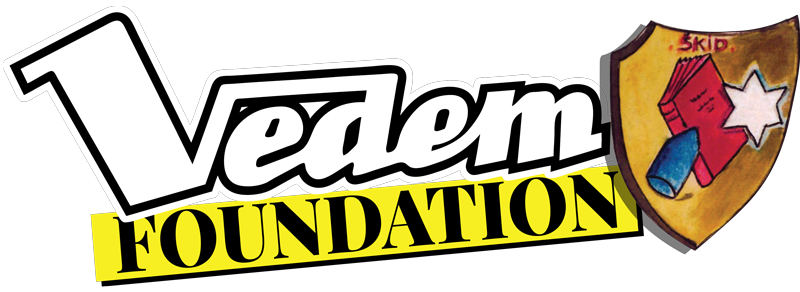FOR IMMEDIATE RELEASE
VEDEM: THE UNDERGROUND MAGAZINE OF THE TEREZIN GHETTO CELEBRATES ITS WORLD PREMIERE AT LOS ANGELES’S SIMON WIESENTHAL CENTER
LOS ANGELES, May 6, 2016 – VEDEM: THE UNDERGROUND MAGAZINE OF THE TEREZIN GHETTO, the art exhibit that documents the longest-running underground magazine in a Nazi camp, celebrated its world premiere at the Simon Wiesenthal Center’s Museum of Tolerance in Los Angeles yesterday in front of more than 1,000 guests, including global dignitaries, Holocaust survivors and local students. Consuls general from Israel, the Czech Republic, Germany, Hungary, Poland and Azerbaijan as well as more than two-dozen Holocaust survivors attended the opening, which was part of the Simon Wiesenthal Center’s annual Yom Hashoah Holocaust Remembrance Day Commemoration.
The event featured the first-ever preview of the documentary film Vedem Underground as well as performances by the Jewish Community Children’s Choir and keynote speeches by David Siegel, Consul General of Israel; Pavol Šepeľák, Consul General of the Czech Republic; and Rabbi Marvin Hier, Founder and Dean of the Simon Wiesenthal Center/Museum of Tolerance.
“Today, I proudly present you with an exhibit that was inspired by the incredibly courageous and creative work of some of the youngest resistance fighters of the World War II era,” said Rina Taraseiskey, founder of the Vedem Underground project and the exhibit’s creator. “In creating the longest running underground magazine within a Nazi camp, these teenage boys refused to give up their identity, their humanity and their fighting spirit.”
VEDEM: THE UNDERGROUND MAGAZINE OF THE TEREZIN GHETTO deconstructs and reinterprets the literary work of the teenage Jewish creators of the longest-running underground magazine in a Nazi camp. From 1942 to 1944, Vedem (“In the Lead” in Czech) chronicled life within the walls of Czechoslovakia’s Terezin Ghetto, and was a symbol of protest and rebellion by some of the era’s youngest resistance fighters. Using a combination of pop-art graphics, archival photographs and cartoons, and the prose and poetry created by the magazine’s contributors, the exhibit celebrates the artistic and cultural legacy of Vedem by breaking down its 83 weekly issues totaling the 800 pages, then reconstructing them in the form of a contemporary magazine.
VEDEM: THE UNDERGROUND MAGAZINE OF THE TEREZIN GHETTO was created by Rina Taraseiskey, a Los Angeles-based filmmaker and curator, and the granddaughter of Holocaust survivors; Los Angeles-based art director Michael Murphy, who conceptualized the exhibit as a merging of punk subculture-inspired art and the 1940s-era ‘zine aesthetic; and Los Angeles-based writer and journalist Danny King.
The exhibit will be at the Simon Wiesenthal Center Museum of Tolerance from May 5 to July 3, 2016, and will travel throughout the U.S. starting in the fall. For more information on the exhibit or the Vedem Underground project, contact founder Rina Taraseiskey at 323.397.6423 or at info@vedemunderground.com.
Vedem Underground is a multimedia project that celebrates the courageous, heartbreaking and ultimately victorious legacy of Vedem (“In the Lead” in Czech), the longest-running underground magazine to be regularly produced by prisoners inside a Nazi concentration camp. The project aims to teach tolerance and encourage artistic activism through Vedem‘s historic, and cultural lessons. The project includes a museum exhibit, a documentary feature film, a graphic novel and an educational program. The exhibit premiered in May 2016, and the film is slated for release in the fall of 2016.
The Museum of Tolerance, the only museum of its kind in the world, is the educational arm of the Simon Wiesenthal Center. Founded in 1993, it has hosted over 5 million visitors annually, challenging them to explore the dynamics of bigotry and racism and to understand the Holocaust in both historic and contemporary contexts. Through interactive exhibits, special events and customized programs for youth and adults, the Museum ultimately encourages its visitors to assume personal responsibility for positive change.
